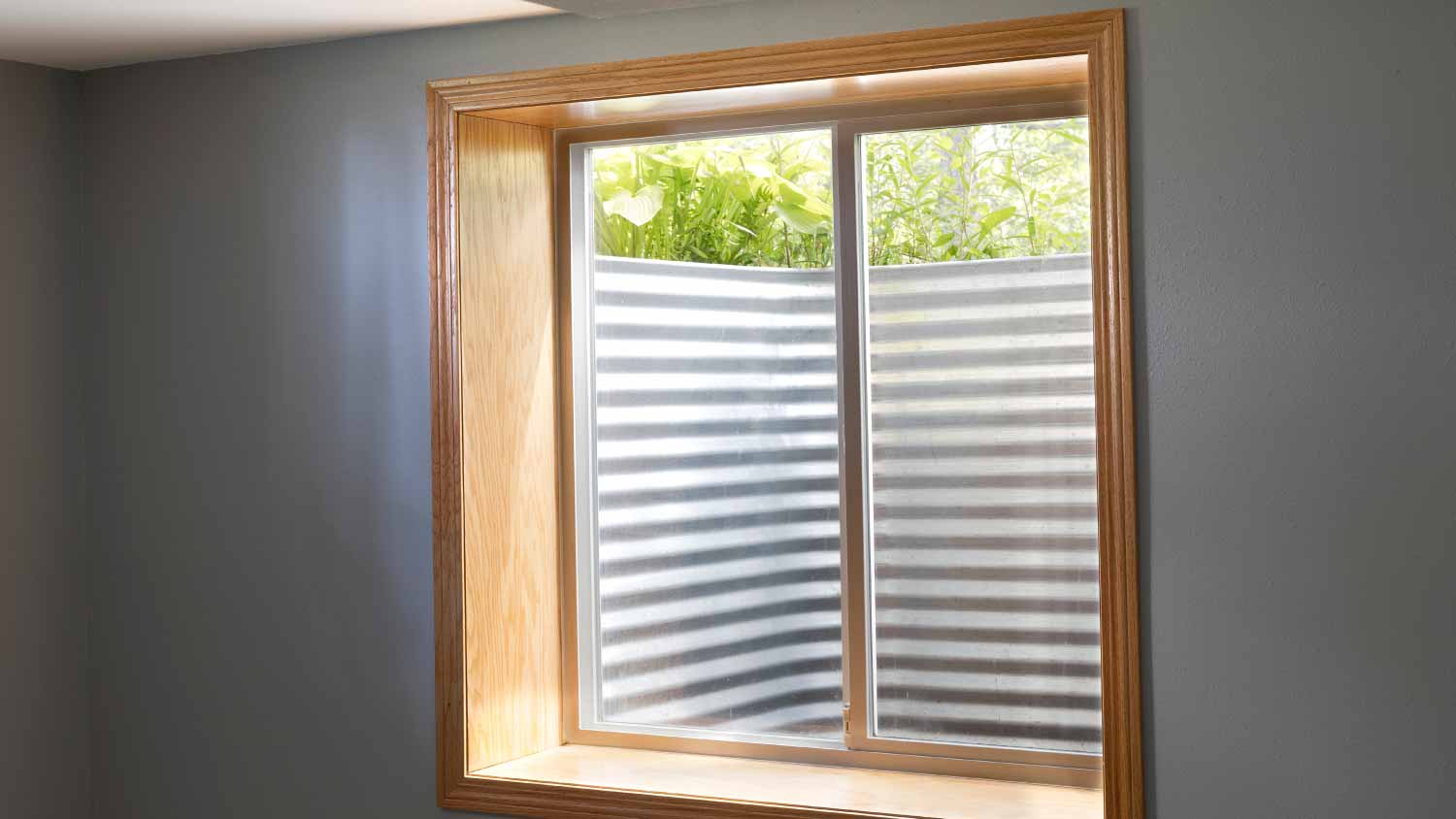Parts of a Double-Hung Window
Make it a double
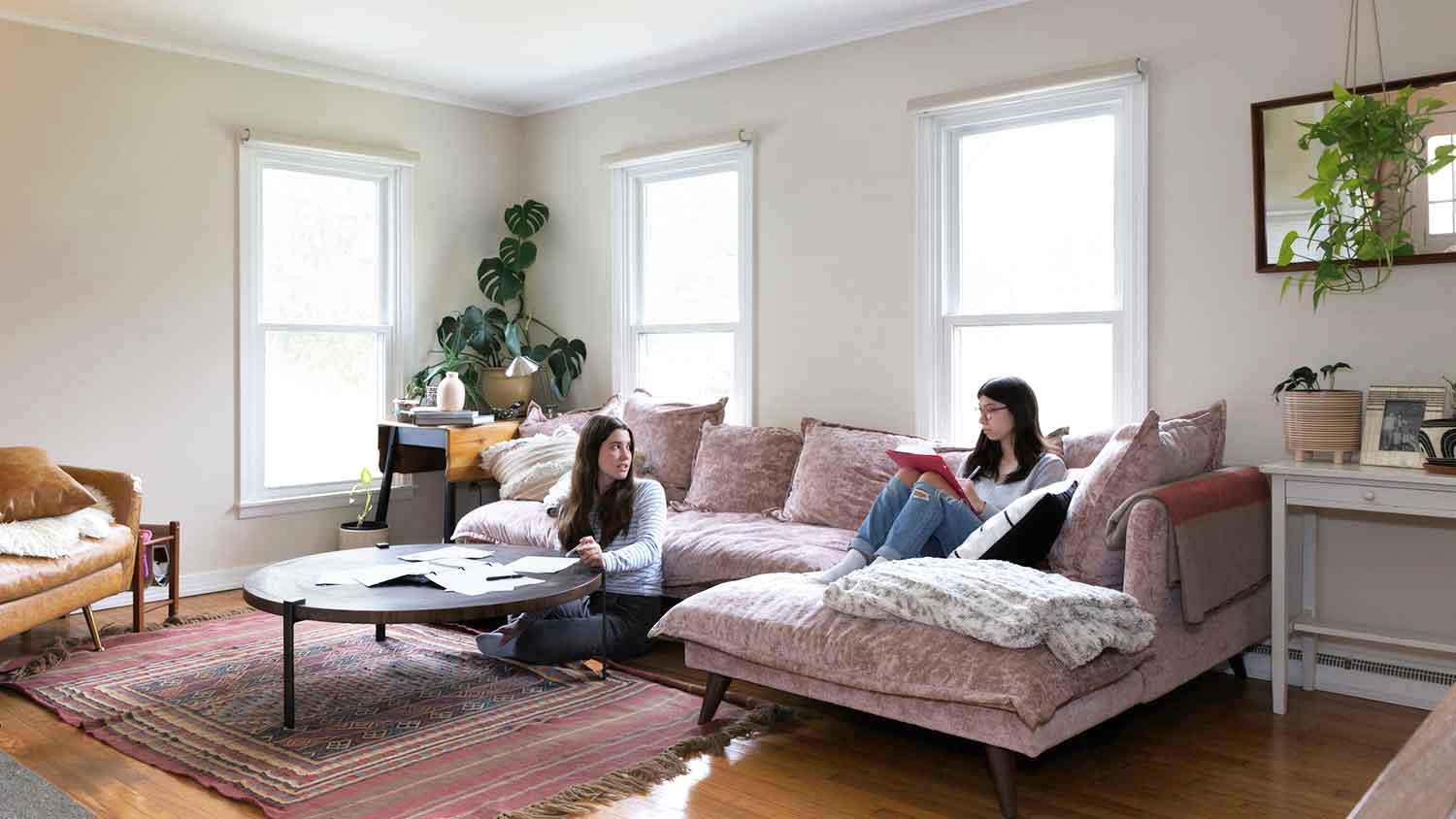

Double-hung windows can increase your property’s value.
Double-hung windows have a frame and a sash, each of which has multiple parts.
Some windows also come with additional connecting and decorative parts.
It costs $429 to $915 per window to replace your current windows with double-hung windows.
Double-hung windows are extremely popular among homeowners. Compared to single-hung windows, they have higher versatility, and energy efficiency, and can boost your property value. However, double-hung windows can be more complicated than their sleek, clean look. Understanding the different parts of a double-hung window helps you maintain your existing windows and troubleshoot if one ever gets jammed or damaged before calling for help.
Use this guide to learn the proper terms for each part of a double-hung window and to find out which parts can be repaired and replaced by yourself.
What Are the Different Parts of a Double-Hung Window and What Do They Do?
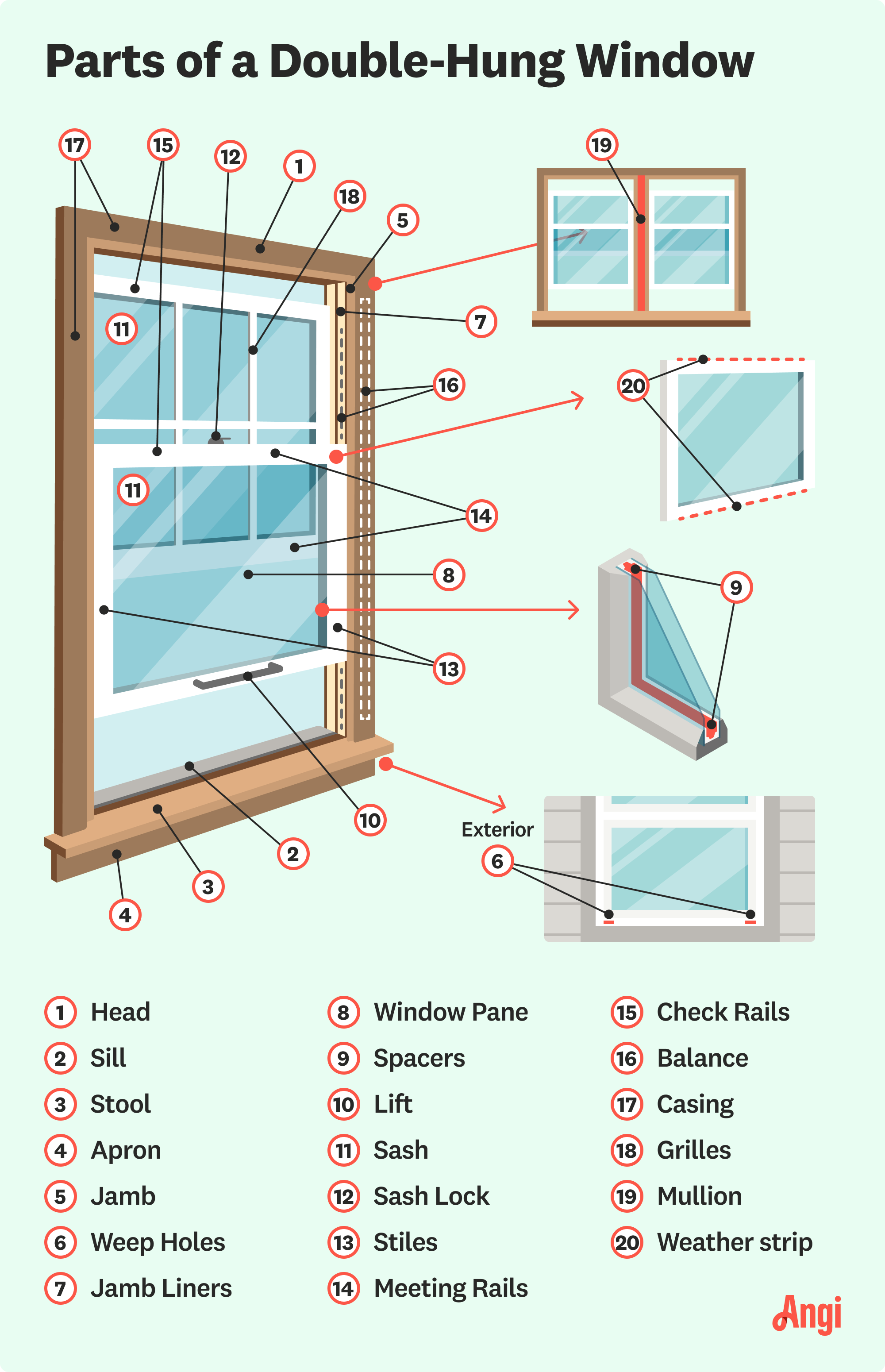
Generally, a double-hung window can be broken down into the window frame, which is the fixed portion of the window on the wall, and the window sash, which is the moving part of the window. The frame and the sash each contain various components serving different functionalities. Double-hung windows may also come with additional decorative elements or connecting mechanisms. Keep reading to discover the bits and pieces in your windows.
1. Head
The window head is the topmost horizontal part of the window frame. It completes the frame’s top border and supports the upper sash.
2. Sill

Opposite the window head, the window sill is the horizontal bottom part of the window frame on the outside of your home. The sill of a double-hung window helps seal the window when the sash is in the closed position and delves water away to prevent it from coming inside. It also provides additional insulation and protection against weather elements.
3. Stool
The stool is the horizontal ledge on the bottom of the window frame, placed inside your home. It is placed directly underneath the bottom sash and provides a small platform for object placement. When most people talk about the sill, they are actually referring to the stool!
4. Apron

The apron is a decorative piece underneath the stool that extends slightly below the stool to make the window frame look more finished on the inside. Some aprons may have other design elements to provide a better aesthetic.
5. Jamb
Window jambs are the vertical sides of the frame that run from the head to the sill. They support the window and hold the tracks for the sash to slide up and down. Jambs need to be properly sealed upon installation to provide proper insulation and prevent drafts.
6. Weep Holes
Weep holes, as the name suggests, allow water to “weep” or escape. They are located at the bottom of the frame and protect your window and surrounding walls from moisture accumulation, extending the window’s lifespan.
7. Jamb Liners
Many modern double-hung windows use jamb liners instead of traditional balances. They contain balances within them and ensure the window sash moves smoothly.
8. Window Pane
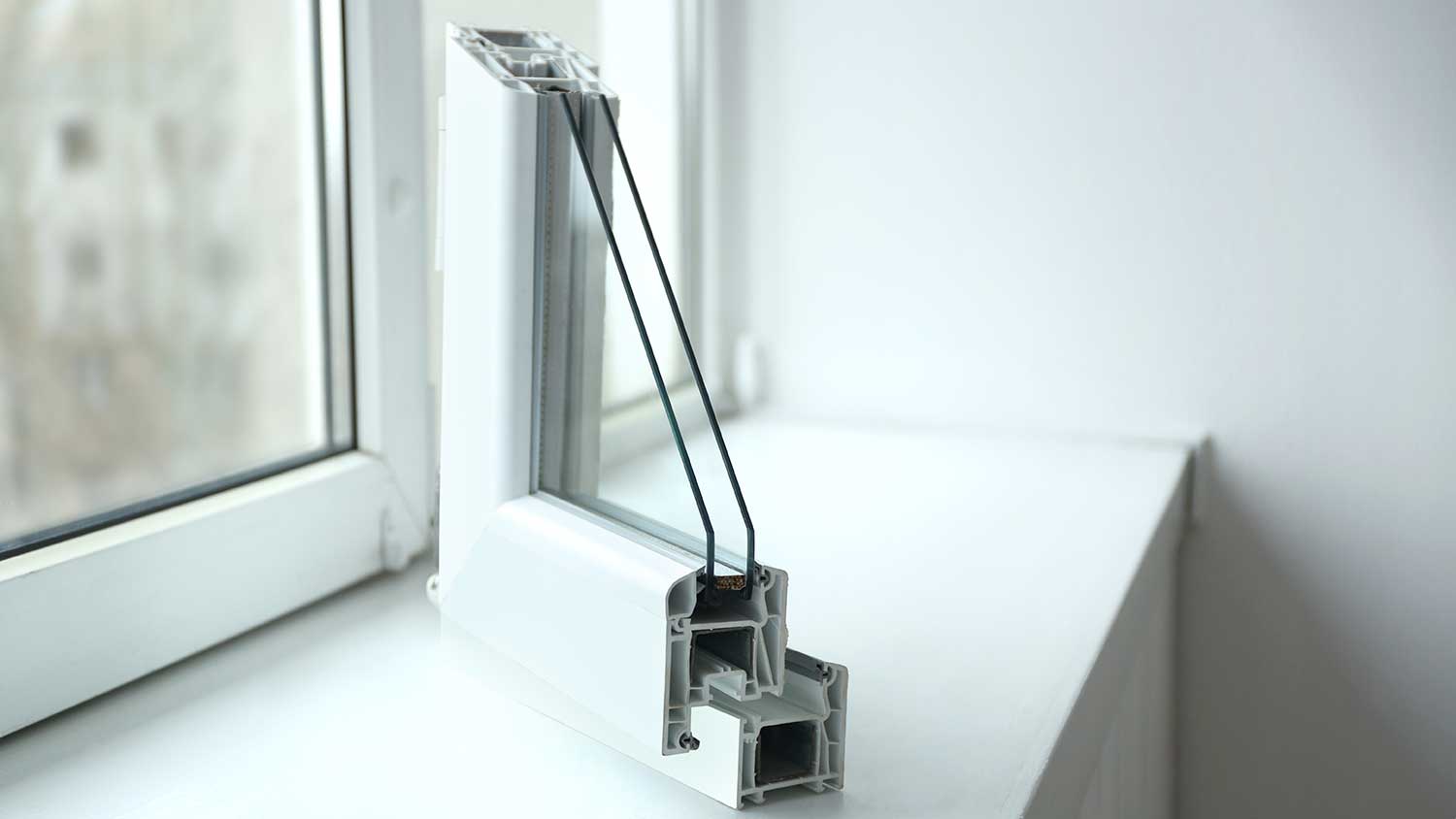
A window pane can be a single layer of glass, but most energy-efficient double-hung windows use multiple glass panes with gas in the gap to provide stronger insulation and temperature control.
9. Spacers
Spacers are located between glass panes in multi-pane windows. They ensure that the window panes maintain the correct distance from each other and stay in their proper places. Sometimes, spacers may be made with moisture-absorbing materials to help prevent condensation.
10. Lift

Some double-hung windows have a lift installed on the bottom sash to make it easier to open and close. The lift is usually a thin lip or handle extending out of the window frame, wide enough for your fingers to grab it.
11. Sash
The sash is the moving frame around the window pane. Double-hung windows have an upper sash and a lower sash and each can be moved independently. The bottom sash usually has a lift on the bottom, and the top one will have its lift on the top frame.
12. Sash Lock

Sash locks hold sashes securely in place, preventing them from sliding or dropping. They also prevent the windows from being opened from the outside. Sash locks are usually located in the middle where the two sashes meet. Some windows might use traditional latches instead of more modern sash locks.
13. Stiles
Stiles refer to the two vertical edges of the sash. Depending on the window’s design, stiles may also contain sliding mechanisms that allow the sash to be opened and closed smoothly.
14. Meeting Rails
Meeting rails refer to the bottom bar of the upper sash and the top bar of the lower sash and they face each other. When the window is closed, the two meeting rails should form a tight seal that prevents the draft from entering.
15. Check Rails
Check rails work as stopping points for both sashes. They are usually located on the top of each sash. They ensure the sashes stay in their proper position when the window is closed. Check rails are in the same position but on the opposite of each meeting rail, ensuring a tight seal between the sash and the window head.
16. Balance
Older models of double-hung windows still use traditional balances, which are counterweights concealed in the window frame. The balances offset the weight of the sashes, so it’s easier to open and close the windows.
17. Casing
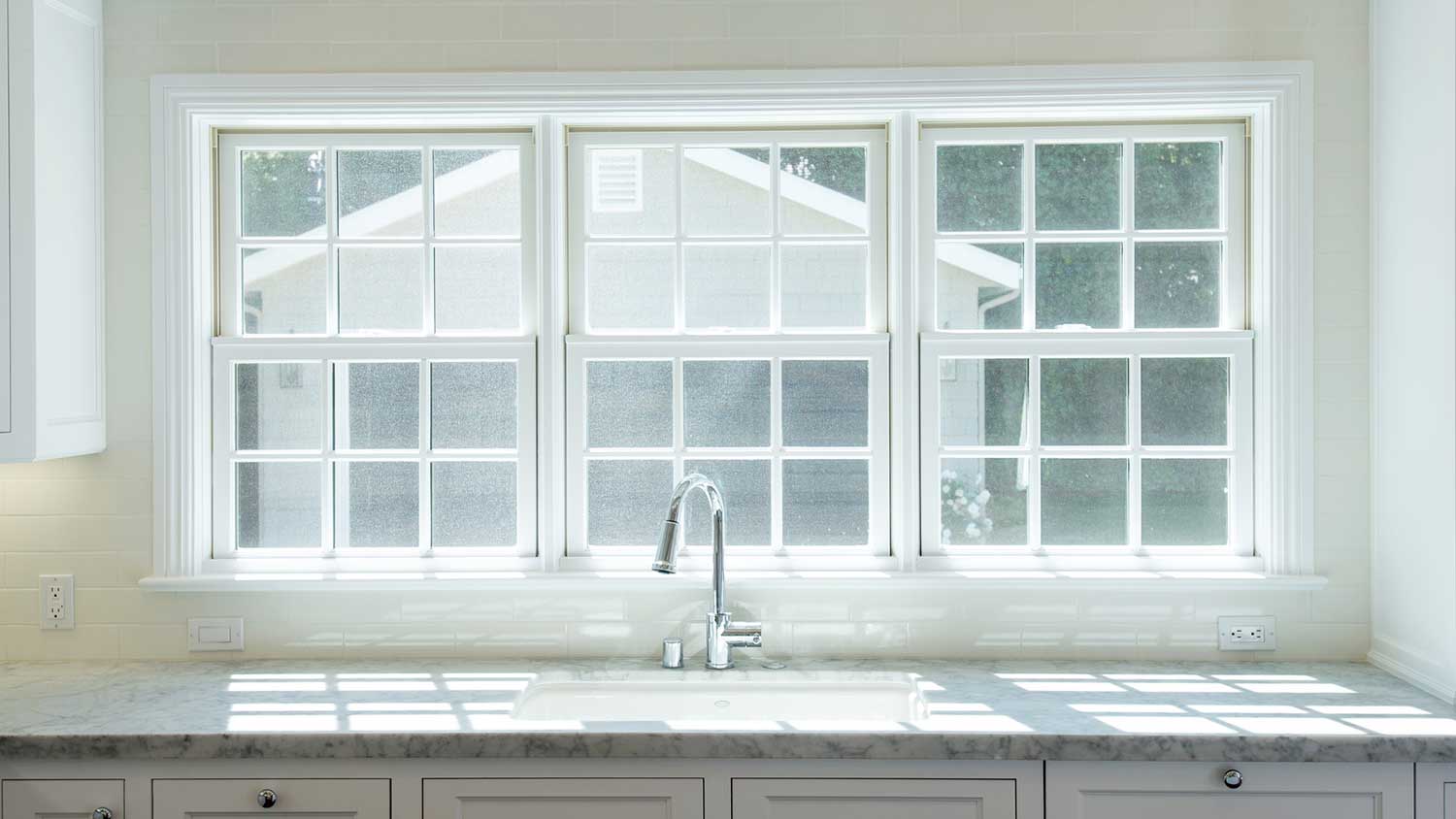
The casing is a visible trim that surrounds the window itself on the interior. It covers the gap between the window frame and the wall for better insulation, and also provides better aesthetics for the window.
18. Grilles
Some double-hung windows have grilles, which divide the sashes into smaller grids for purely decorative purposes. These grids often add a classic touch to the windows but also make them easier to clean since you can do it section by section. Grills come in many designs, including diamonds, gothic, prairie, radius, and others.
19. Mullion
Mullion is a horizontal or vertical piece that connects two double-hung windows together. While mullions also create a grid-like appearance, they are also functional and provide stronger structural support for multi-pane window designs. They often look similar to the window frame for visual consistency.
20. Weatherstrip
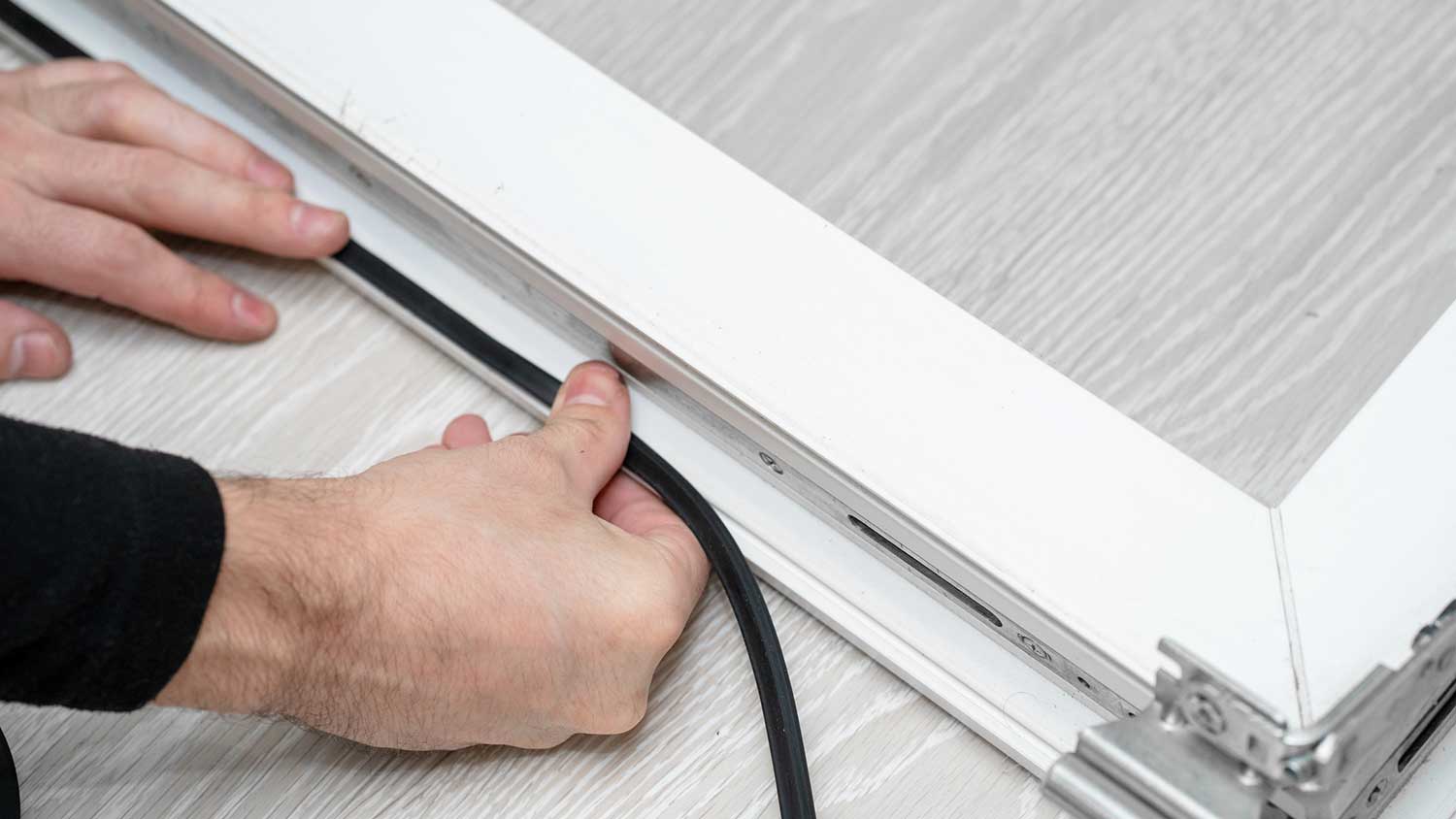
Some double-hung windows may already come with weatherstrip for insulation purposes. Usually made with foam, rubber, or felt, weatherstrips are attached to the sashes for weatherproofing.
How to Maintain the Different Parts of a Double-Hung Window
To maintain the interior of a double-hung window, begin by choosing some type of window treatment, such as blinds or Roman shades. Regular cleaning is sufficient for the inside frame and casing, and you can clean and inspect the exterior of your double-hung windows once a year or after a severe storm.
For moving parts, periodically use a brush to clean any dust or grease that has gathered to ensure smooth movement. These include the sashes, jamb liners, jambs, and sash locks or latches. You should also replace weatherstrips once they begin to wear out or if they come loose.
With proper maintenance, your double-hung windows should last 15 to 30 years on average.
Cost to DIY Double-Hung Window Part Repair vs. Hiring a Pro
Minor repairs on double-hung windows on the inside can be easily done yourself. For example, weatherstrips, shaft lifts, and even shaft locks or latches are designed for easy replacement. Minor damages on the interior casing can also be handled by yourself, as long as you feel comfortable with basic handy tasks.
However, any damage to the window structure, such as bent rails or broken sashes, requires professional attention. Make sure to work with a professional window installation company and shop around for the best prices.
Repair vs. Replacement
Simple repairs can take care of minor, non-structural damages to visible parts, such as mullions, latches, lifts, weatherstrips, or scratches and dents on the frame and casings. A professional installer can also replace damaged window panes without completely removing the window, as long as the frame and sash aren’t damaged.
If it comes down to replacing a double-hung window, expect to pay $429 to $915 for each one. The final cost is affected by the number of windows needed, brand, and material. Most companies have standard pricing by window sizes, which can be found on most retailer product pages or directly from the manufacturer’s website.




